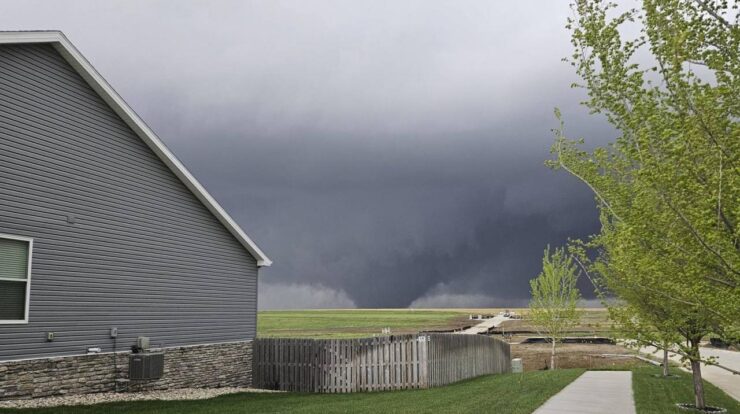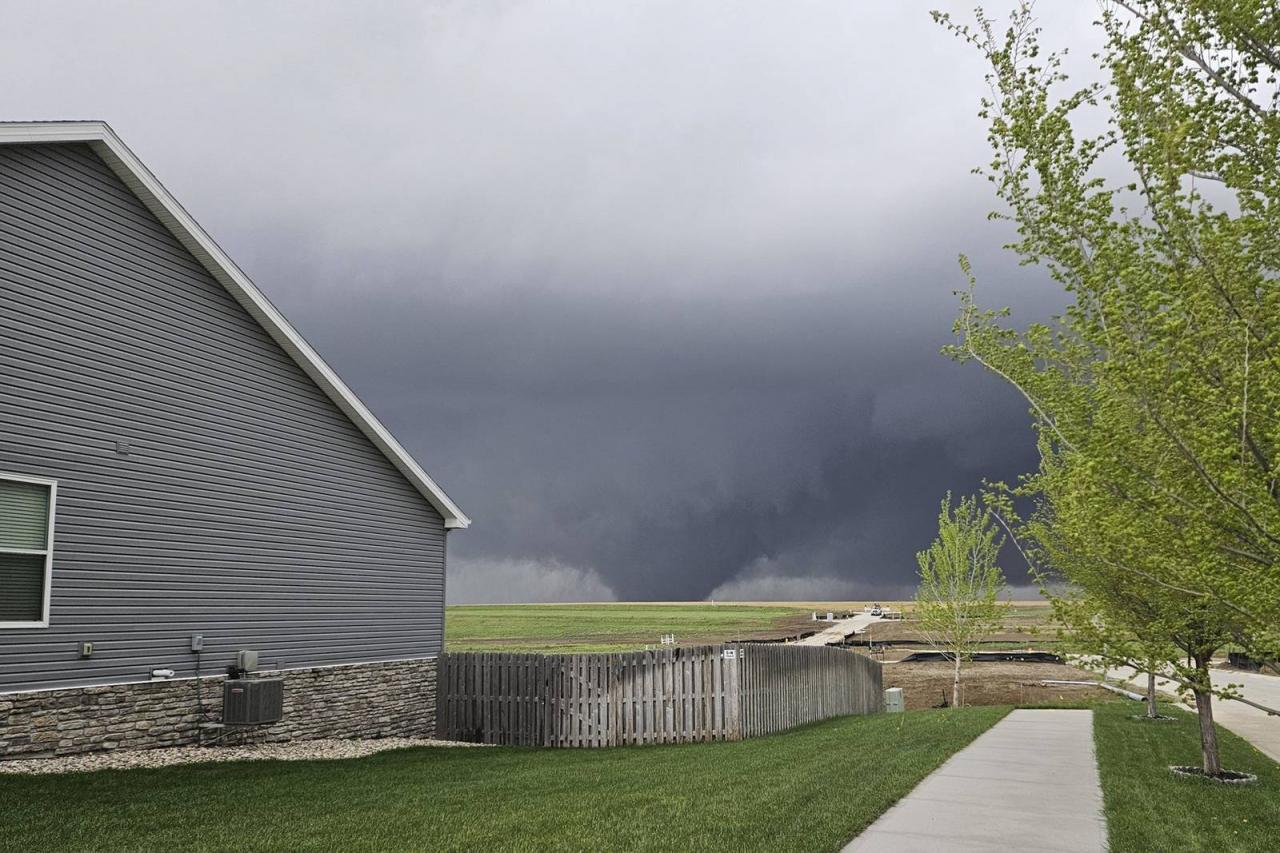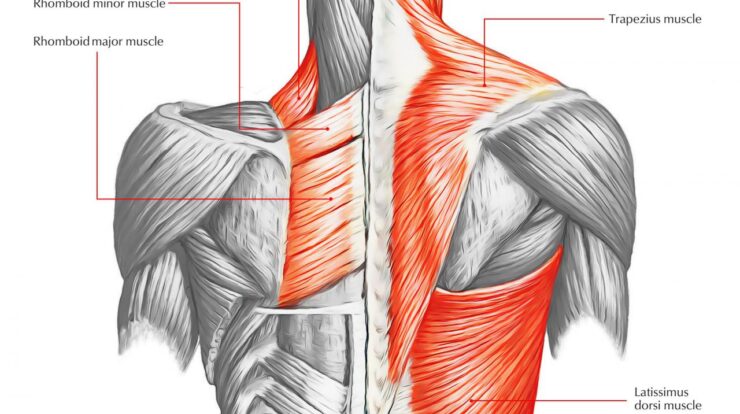
Tornadoes in Nebraska today pose a significant threat to communities across the state. Understanding the history, current activity, and safety measures associated with tornadoes is crucial for protecting lives and property.
Nebraska has a long history of tornado activity, with notable events including the devastating tornadoes of 1950 and 2019. The state’s geographic location and weather patterns contribute to the formation of tornadoes, particularly during the spring and summer months.
Tornado History in Nebraska
Nebraska has a long and well-documented history of tornadoes. The state’s first recorded tornado occurred in 1858, and since then, Nebraska has experienced an average of 50 tornadoes per year.
Some of the most notable tornadoes in Nebraska history include the Hallam tornado of 1980, which killed 10 people and injured 100; the Grand Island tornado of 1982, which killed 6 people and injured 100; and the Pilger tornado of 2014, which killed 1 person and injured 19.
Tornadoes in Nebraska are most common during the spring and summer months, and they typically occur in the eastern and central parts of the state. The Great Plains region, where Nebraska is located, is one of the most tornado-prone areas in the world.
Geographic Distribution of Tornadoes in Nebraska
Tornadoes can occur anywhere in Nebraska, but they are most common in the eastern and central parts of the state. The following counties have the highest average number of tornadoes per year:
- Lancaster County
- Platte County
- Colfax County
- Butler County
- Saunders County
The reason for this geographic distribution is not fully understood, but it is thought to be related to the state’s climate and topography.
Factors that Contribute to Tornado Formation in Nebraska
Tornadoes form when warm, moist air from the Gulf of Mexico meets cold, dry air from the north. The rising warm air creates an area of low pressure, which draws in more warm air. This creates a cycle that can lead to the formation of a tornado.
The following factors can contribute to tornado formation in Nebraska:
- Warm, moist air from the Gulf of Mexico
- Cold, dry air from the north
- A strong wind shear
- A lifting mechanism, such as a thunderstorm updraft
Current Tornado Activity

There are no active tornado warnings or watches in Nebraska at this time.
The Storm Prediction Center has issued a slight risk of severe thunderstorms for eastern Nebraska for later this afternoon and evening. These storms could produce hail, damaging winds, and tornadoes.
Please stay tuned to your local weather forecast for the latest information on tornado activity.
Map of Current Tornado Activity
[Interactive map showing the location and severity of tornadoes in Nebraska]
Potential Impact of Current Tornado Activity, Tornadoes in nebraska today
The current tornado activity in Nebraska has the potential to cause significant damage to property and infrastructure. Tornadoes can also cause injuries and death. It is important to take precautions to stay safe during a tornado.
- Have a tornado safety plan and practice it with your family.
- Be aware of the weather forecast and be prepared to take shelter if a tornado warning is issued.
- If you see a tornado, take shelter immediately in a sturdy building.
- Stay away from windows and doors.
- Cover your head and neck with a blanket or pillow.
Tornado Safety and Preparedness

Tornadoes can be deadly, but there are steps you can take to stay safe. Here are some tornado safety tips:
Before a Tornado
- Have a tornado safety plan and practice it with your family.
- Know the location of your nearest tornado shelter.
- Keep a battery-powered radio and flashlight on hand.
- Have a first-aid kit and other emergency supplies ready.
- Stay informed about the weather forecast and be prepared to take shelter if a tornado warning is issued.
During a Tornado
- If you are outside, take shelter immediately in a sturdy building.
- Stay away from windows and doors.
- Cover your head and neck with a blanket or pillow.
- If you are in a car, get out and take shelter in a nearby building.
- If you cannot find a sturdy building to shelter in, lie down in a ditch or other low-lying area and cover your head with your hands.
After a Tornado
- Stay away from damaged areas.
- Check yourself and others for injuries.
- Report any downed power lines or other hazards to the authorities.
- Be prepared for aftershocks.
- Contact your insurance company to report any damage.
Concluding Remarks: Tornadoes In Nebraska Today

Ongoing research and mitigation efforts aim to improve tornado forecasting and warning systems, while land-use planning and building codes play a vital role in reducing the impact of tornadoes on communities. By understanding the risks and taking appropriate safety measures, individuals and communities in Nebraska can better prepare for and respond to tornadoes.
FAQ Resource
What are the warning signs of a tornado?
Dark, rotating clouds, funnel clouds, and debris in the air are all potential signs of a tornado.
What should I do if I see a tornado?
Seek immediate shelter in a basement or interior room on the lowest floor of a sturdy building. Stay away from windows and exterior walls.
How can I prepare for a tornado?
Develop a tornado safety plan, assemble an emergency kit, and stay informed about weather forecasts and warnings.





